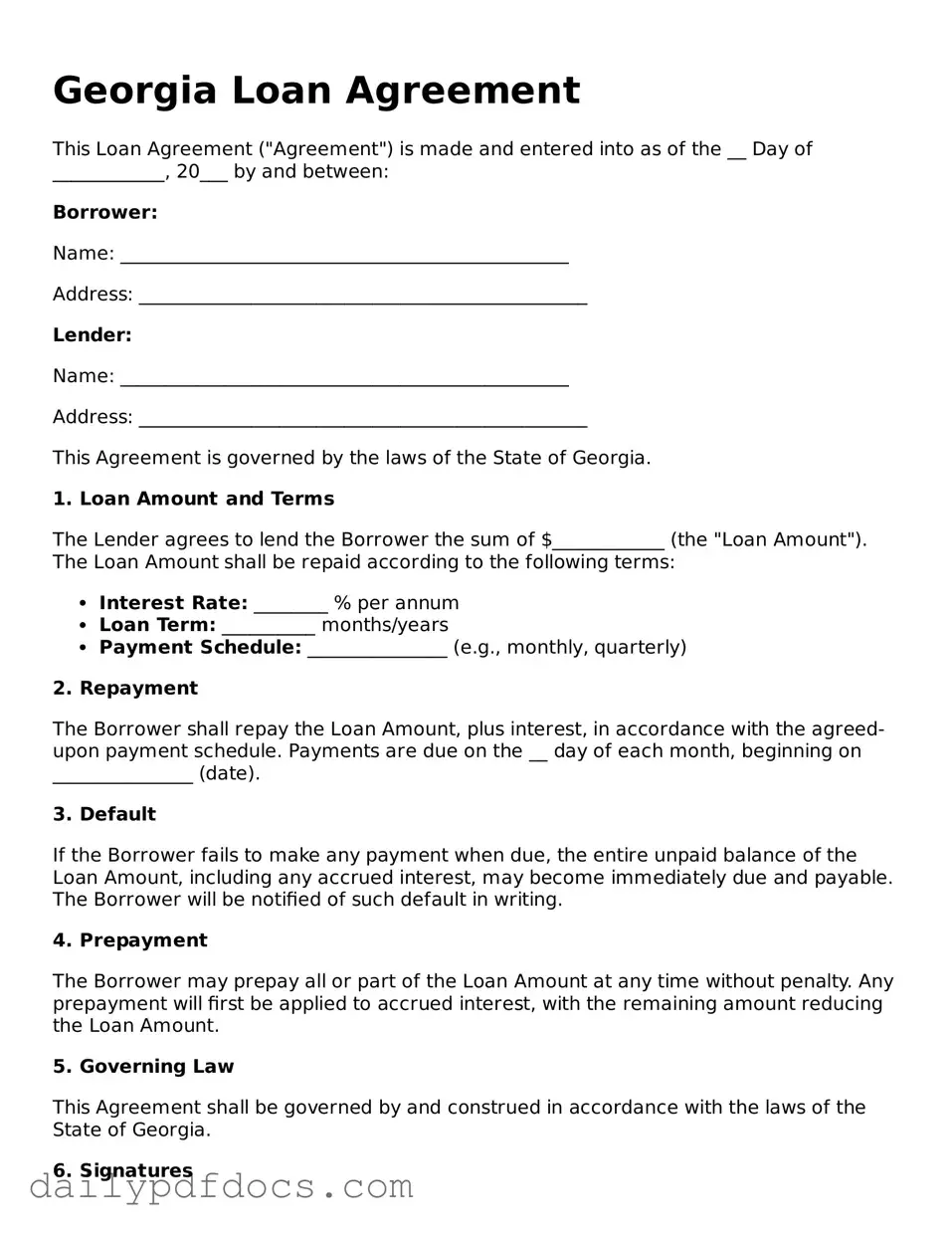Georgia Loan Agreement
This Loan Agreement ("Agreement") is made and entered into as of the __ Day of ____________, 20___ by and between:
Borrower:
Name: ________________________________________________
Address: ________________________________________________
Lender:
Name: ________________________________________________
Address: ________________________________________________
This Agreement is governed by the laws of the State of Georgia.
1. Loan Amount and Terms
The Lender agrees to lend the Borrower the sum of $____________ (the "Loan Amount"). The Loan Amount shall be repaid according to the following terms:
- Interest Rate: ________ % per annum
- Loan Term: __________ months/years
- Payment Schedule: _______________ (e.g., monthly, quarterly)
2. Repayment
The Borrower shall repay the Loan Amount, plus interest, in accordance with the agreed-upon payment schedule. Payments are due on the __ day of each month, beginning on _______________ (date).
3. Default
If the Borrower fails to make any payment when due, the entire unpaid balance of the Loan Amount, including any accrued interest, may become immediately due and payable. The Borrower will be notified of such default in writing.
4. Prepayment
The Borrower may prepay all or part of the Loan Amount at any time without penalty. Any prepayment will first be applied to accrued interest, with the remaining amount reducing the Loan Amount.
5. Governing Law
This Agreement shall be governed by and construed in accordance with the laws of the State of Georgia.
6. Signatures
This Agreement is executed as a sealed instrument. By signing below, the Borrower and Lender agree to the terms outlined in this Agreement.
_____________________________
Borrower’s Signature
Date: ______________________
_____________________________
Lender’s Signature
Date: ______________________
